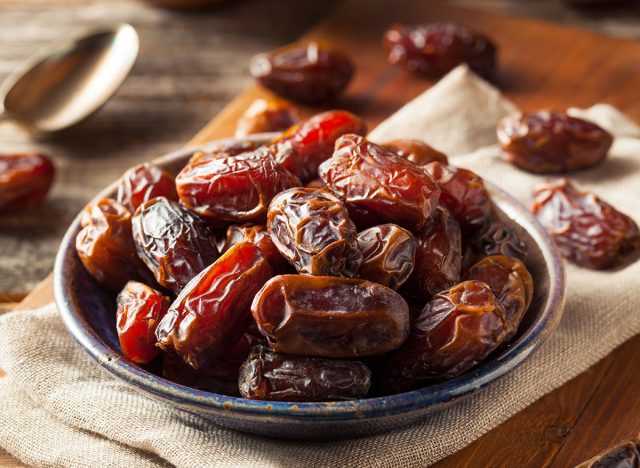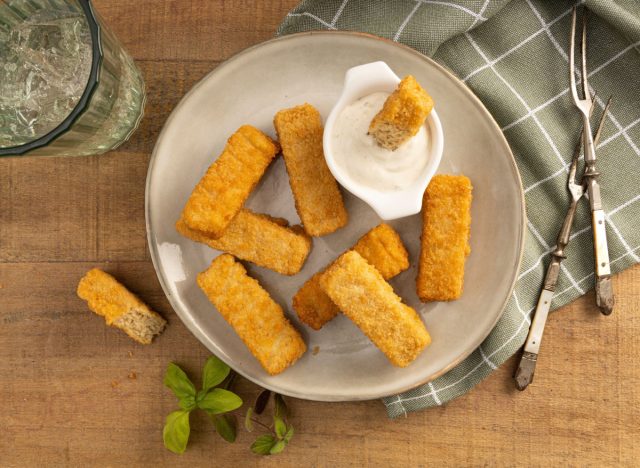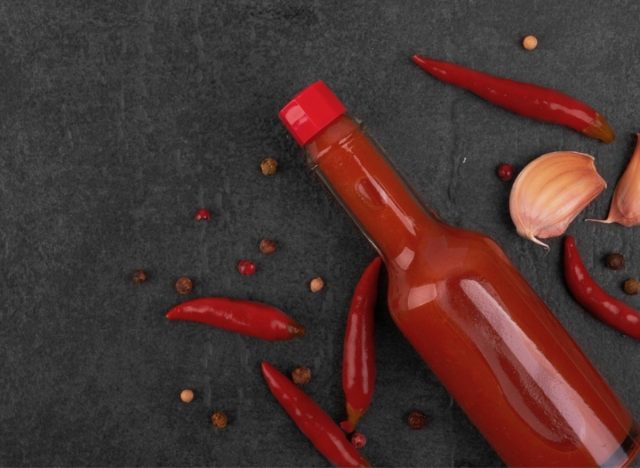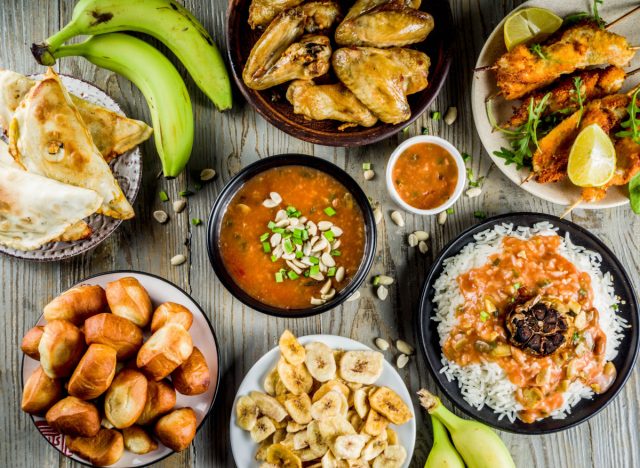5 Grocery Store Trends You'll Start Seeing Everywhere in 2023

New Year predictions are a time-honored tradition in the food industry. Supermarket chains, trade associations, and consumer think tanks each put out their own forecasts for which trends will rule the aisles in the coming year. Sometimes they get it right.
Not long ago, forecasters were pointing to gochujang, the fermented chili paste with a long history in Korean kitchens but a then-rare find at U.S. retailers. Nowadays, you can pick up a jar at Target or Walmart quite easily.
We spoke to experts and poured through the published reports for next year. Here are five of the most compelling grocery trends that forecasters are anticipating in 2023.
Dates Galore

Dates have been around for centuries, though it's unlikely the ancient Mesopotamians ever converted them into candy bars. The sticky sweet stone fruit earned a new place in the popular imagination this year, thanks to a viral TikTok recipe for Snickers-inspired stuffed dates.
Forecasters suggest that's just the beginning, with dates showing promise as both a natural sugar alternative and an ingredient in all kinds of products from cookies to barbecue sauce.
"Expect more dates in every shape and form," noted the Specialty Food Association's Trendspotter Panel for 2023. A recent report by Whole Foods also pointed to a major renaissance for "nature's candy" in the new year. "Consumers are looking for snacks that feel healthier but are still convenient and satisfying," said Melanie Bartelme, associate director at Mintel Food & Drink. "What's more, dates are low-glycemic, meaning they do not contribute to blood sugar spikes."
Science Lab Seafood

If you were impressed by modern plant-based burgers that bleed like real beef, then get ready for the next big thing in man-made proteins: alternative seafood.
We're talking frozen delicacies like faux fish sticks made from rice flakes and vegan shrimp made from konjac root. It's a small but fast-growing business, with at least 120 companies worldwide competing to offer edible solutions to issues like overfishing, microplastic contamination, and seafood allergies.
The number of plant-based seafood products sold in the United States jumped by 25% in 2021, according to the nonprofit Good Food Institute. And a lot more is on the way, with investors pouring nearly $175 million into alternative seafood companies last year alone.
Hot & Spicy Everything

The hot sauce boom over the last decade or so has spilled over into many other products like honey and ketchup, as the public's appetite for tingly, capsaicin-laden flavors shows no signs of mellowing. Look out for new chili-infused cheeses, cookies, all at varying heat levels and often with callouts for specific peppers on the label.
Consider the state of our world and remember that bland food is for calmer times. "Spicy food tends to gain popularity in tough times, as hotter products can give consumers a quick release from their day-to-day stresses without much investment," said Mintel's Bartelme. "Providing nuanced heat sources from different kinds of peppers gives consumers even more opportunities for this kind of mental break."
More Worldly Flavors

The so-called ethnic foods aisle at American supermarkets is generally dominated by Hispanic and Asian foodstuffs. That narrow scope is starting to widen, though, with a growing influx of Caribbean, South American, and West African influences.
If you've never tried Ghanaian-style shito sauce, you're in luck! You can now pick up a bottle at Target or Walmart. Experts suggest these expanding tastes are partly due to our collective wanderlust from being cooped up during the pandemic and wanting to recreate the flavors of travel while stuck at home.
Another factor: people's growing sense of freedom to showcase the culinary traditions of their own heritage. "As more chefs, entrepreneurs, and product producers really become bold in representing who they are—their countries, their cultures, their languages—they are helping to normalize these global flavors," said V. Sheree Williams, executive director of the nonprofit Global Food and Drink Initiative.
Low-Caffeine Beverages

Americans drink a lot of coffee: 491 million cups per day, according to the National Coffee Association. We love the aroma. We love the mental energy boost it provides. The jittery side effects? Not so much.
In fact, a recent Mintel study shows that 37% of American coffee drinkers worry about the health impacts of all that caffeine. Sure, we could switch to decaf, or quit cold-turkey, but there is now a more moderate option: low-caffeine coffee, such as the cleverly titled brand Buzz Lite.
It's one of several up-and-coming products aimed at helping consumers stay sharp without wreaking havoc on their bodies. Teas and other beverages made from yaupon, North America's only native caffeinated plant, offer another low-dose option. Yaupon contains about 30% less caffeine than coffee, but it's also an entirely different taste. "Low-caffeine coffee is the perfect first-wave solution for consumers seeking focus and productivity because it is a familiar source of energy," said Mintel Food & Drink Director Jenny Zegler.








